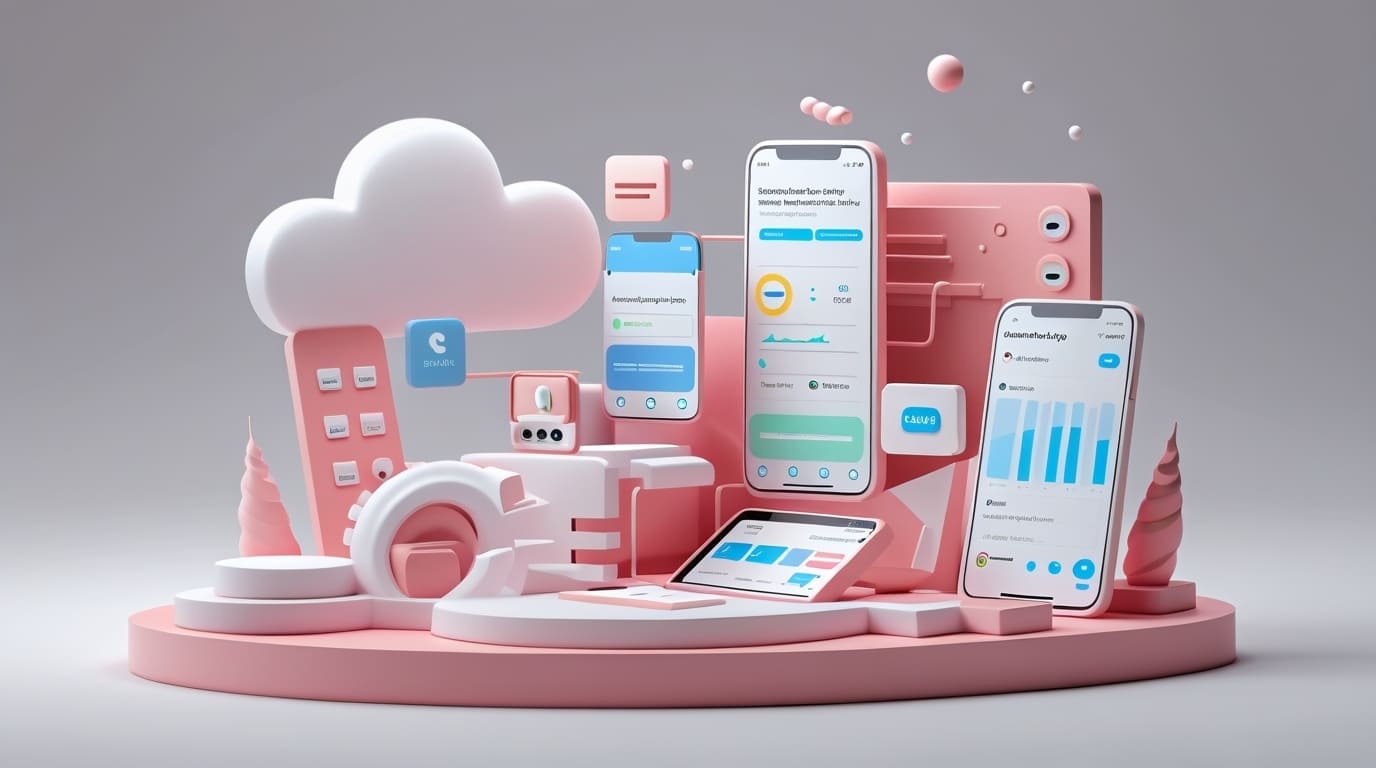Struggling to make quick decisions on the go with scattered data? Mobile dashboards aren’t just a luxury — they’re a necessity for businesses craving real-time insights wherever they are. In today’s fast-paced environment, having the ability to track and interpret crucial metrics instantly can be the edge that sets your business apart. If you want to unlock the power of KPI visualization and data streaming right from your mobile device, this guide on designing mobile dashboards will give you the edge you need.
From effectively prioritizing KPIs to integrating seamless data streams, and creating an intuitive user experience, each element plays a vital role in how mobile dashboards empower real-time decision making.
Designing for KPI Visualization on Mobile
The first step to a powerful mobile dashboard is delivering key performance indicators in a clear, concise manner. Unlike large desktop monitors, mobile devices come with size limitations and different interaction patterns, so tailoring KPI visualization is critical.
Importance of Prioritizing KPIs
When it comes to mobile dashboards, less is more. Displaying every available data point creates clutter and confuses users. Instead, prioritize KPIs that directly impact decision-making. Focus on metrics aligned with business goals or urgent operational needs. For example, a logistics manager may prioritize shipment delays, delivery times, and warehouse capacity as KPIs.
Techniques for Simplifying Complex Data into Digestible Visuals
Simplifying complex data is essential to avoid overwhelming mobile users:
- Use clear, minimalist charts: Donut charts for progress, sparklines for trends, and bar graphs for comparisons work best on small screens.
- Leverage color coding: Intuitive colors (red for alert, green for good performance) convey meaning at a glance without need for extra text.
- Allow quick drill-downs: Interactive elements like expandable KPI widgets enable users to access more detail only when needed.
- Display real-time snapshot: Avoid data dumps by showing current value, % change, and status icons (up/down arrows) for instant interpretation.
Examples of Effective KPI Visualization on Mobile Apps
Leading mobile dashboard tools like Tableau Mobile and Power BI Mobile utilize these tactics effectively:
- Prioritized KPI tiles with bold numbers and color-coded backgrounds to highlight urgent metrics.
- Trend sparklines embedded in KPI tiles show performance trajectory.
- Notification badges alert users to critical threshold breaches immediately.
These design principles help users quickly digest performance insights and take action instantly — vital for real-time decision making.
Integrating Real-Time Data Streaming
The backbone of any real-time mobile dashboard is the ability to stream continuous data feeds that ensure KPIs reflect the latest state of business.
Overview of Data Streaming Technology
Data streaming technology enables dashboards to ingest and display live data without manual refreshes. Popular streaming frameworks such as Apache Kafka, AWS Kinesis, and Azure Event Hubs power the flow of real-time events from diverse sources — sensors, transaction records, social media feeds, and more. Mobile dashboards connect to these streams to update visualizations on the fly.
Challenges in Implementing Real-Time Updates on Mobile
Implementing real-time streaming on mobile devices requires overcoming certain challenges:
- Network reliability: Mobile users may face inconsistent signals leading to delayed or missing updates.
- Battery consumption: Continuous data connections strain battery life if not optimized.
- Data volume and latency: Managing large continuous data inflows without performance drops is complex.
- Security concerns: Streaming sensitive data calls for encrypted transmission and user authentication.
Strategies to Maintain Performance and Data Accuracy
To address these challenges, consider:
- Push-based architecture: Use push notifications for critical KPI changes to reduce constant polling.
- Intelligent buffering: Cache incoming data locally to smooth out intermittent connectivity and reduce refresh load.
- Data compression: Apply compression algorithms to minimize data size and bandwidth use.
- Adaptive streaming rates: Adjust data polling frequency based on network quality and dashboard importance.
- End-to-end encryption: Protect streams with TLS and integrate multi-factor authentication to guard data privacy.
Implementing robust real-time data streaming transforms mobile dashboards from static reporting tools into dynamic decision engines capable of triggering immediate actions.
User Experience (UX) Best Practices for Mobile Dashboards
Effective KPI visualization and data streaming lose impact if users struggle to interact with the dashboard. UX design tailored to mobile use is essential for meaningful real-time decision making.
Navigation and Layout Considerations
- Single-screen focus: Design primary KPI dashboards that fit one screen without side-scrolling. Users should grasp the full context with just a glance.
- Intuitive gestures: Incorporate touch-friendly elements like swipe and tap for detailed views without complicated menus.
- Logical hierarchy: Place the most critical KPIs prominently at the top or center. Secondary metrics go below or in collapsible sections.
Interactive Elements to Boost Engagement
Engagement increases when users can interact naturally:
- Filter controls: Allow users to adjust timeframes, locations, or categories directly on the dashboard.
- Threshold alerts: Enable users to set custom alert criteria with instant visual feedback.
- Contextual tooltips: Provide brief explanations on KPI definitions or calculation methods when tapped.
Balancing Data Density and Readability
Mobile screens are small, so balancing how much data to show without overwhelming users is vital:
- Avoid clutter by limiting to 4–6 KPIs per view.
- Use whitespace strategically to separate data blocks.
- Prefer concise labels and icons over verbose text.
- Implement responsive typography for readability under different lighting.
Applying these UX best practices ensures mobile dashboards are not only informative but also easy and enjoyable to use, fostering faster interpretation of real-time insights.
Emerging Trends and Advanced Tactics in Mobile Dashboards
As mobile dashboards evolve, integrating advanced technologies and future-proof tactics amplifies their power for decision makers.
AI-Powered KPI Recommendations
Artificial Intelligence embedded into mobile dashboards can analyze historical patterns and automatically recommend KPIs or alert users to anomalies. For instance, AI algorithms might detect an abnormal sales drop and push a KPI alert with suggested corrective actions, transforming dashboards into proactive advisors.
Adaptive Dashboard Layouts Based on User Behavior
Modern dashboards use machine learning to tailor interfaces to individual users. By analyzing interaction history, dashboards can prioritize and reorder KPIs dynamically, surface the most relevant data streams, and adjust visualization types to user preferences, all optimizing the information delivery for faster decisions.
Ensuring Data Privacy and Security on Mobile Platforms
With mobile devices being susceptible to data breaches and loss, advanced security measures are paramount:
- Biometric authentication: Use fingerprint or face recognition to control dashboard access.
- Role-based access control (RBAC): Limit data visibility to authorized users only.
- End-to-end encryption: Secure data in transit and at rest using the latest cryptographic protocols.
- Remote wipe capabilities: Enable IT to instantly remove sensitive data from lost or stolen devices.
Adopting these trends ensures mobile dashboards remain reliable, secure, and smart — giving decision makers confidence to act swiftly on sensitive real-time data.
Conclusion
Mobile dashboards revolutionize real-time decision making by bringing critical KPI visualization and live data streaming to your fingertips. Their ability to distill complex metrics into clear visuals, update continuously with latest data, and adapt intelligently to user needs empowers faster, smarter business actions anytime, anywhere.
For businesses eager to implement cutting-edge mobile analytics solutions, WildnetEdge stands out as a trusted partner delivering robust, scalable mobile dashboard platforms tailored for actionable insights. With expertise spanning seamless data streaming integration, customized KPI visualization, and secure mobile environments, WildnetEdge guides your journey toward transforming decision-making processes in 2025 and beyond.
FAQs
Q1: How do mobile dashboards improve KPI visualization?
Mobile dashboards tailor KPI displays to fit smaller screens without losing clarity, enabling users to quickly interpret key metrics on the go through simplified charts, prioritization, and color coding.
Q2: What are best practices for data streaming in mobile dashboards?
Best practices include optimizing for low latency using push-based updates, compressing data efficiently to save bandwidth, buffering for unreliable networks, and ensuring seamless background updates to maintain real-time accuracy.
Q3: Which industries benefit most from real-time mobile dashboards?
Industries like retail, logistics, finance, and healthcare rely heavily on mobile dashboards for instantaneous decisions driven by live KPI data that influence supply chains, financial markets, patient monitoring, and customer engagement.
Q4: How can I ensure usability in a mobile dashboard design?
Focus on intuitive navigation, minimalistic layout, prioritized KPIs, responsive fonts, and interactive elements like filters and alerts to enhance user engagement on mobile devices without overwhelming screen space.
Q5: Why partner with WildnetEdge for mobile dashboard solutions?
WildnetEdge offers expertise in scalable mobile platforms, seamless data streaming integration, and custom KPI visualization tailored to your specific business needs, ensuring secure and actionable insights available anytime, anywhere.

Nitin Agarwal is a veteran in custom software development. He is fascinated by how software can turn ideas into real-world solutions. With extensive experience designing scalable and efficient systems, he focuses on creating software that delivers tangible results. Nitin enjoys exploring emerging technologies, taking on challenging projects, and mentoring teams to bring ideas to life. He believes that good software is not just about code; it’s about understanding problems and creating value for users. For him, great software combines thoughtful design, clever engineering, and a clear understanding of the problems it’s meant to solve.
 sales@wildnetedge.com
sales@wildnetedge.com +1 (212) 901 8616
+1 (212) 901 8616 +1 (437) 225-7733
+1 (437) 225-7733































